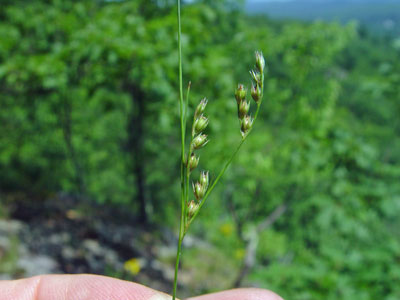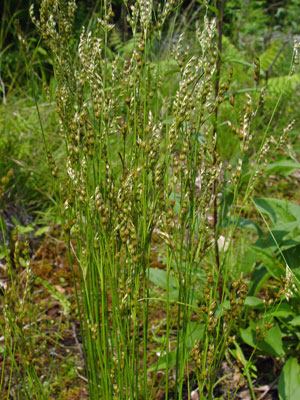DACF Home → Bureaus & Programs → Maine Natural Areas Program → Communities, Plants, and Animals → Rare Plants → Juncus secundus

Juncus secundus Beauv. ex Poir.
Secund Rush
- State Rank: S1
- Global Rank: G5?
- State Status: Threatened
Habitat: Dry, open, sterile soil and clearings [Rocky summits and outcrops (non-forested upland)].
Range: Maine south to Georgia west to Kansas, north to Ontario.
Aids to Identification: Rushes are recognized by their grass like morphology, small flowers with 6 tepals, and 3-valved capsules. Juncus secundus is a member of the bracteolate rushes, each flower has a pair of bracts at the base of the pedicel. The largest and lowest bract in J. secundus is usually shorter than the inflorescence and the leaves are restricted to the lower third of the plant. The flowers of J. secundus are located primarily along the inner side of the branches.

Ecological characteristics: Found on exposed, dry areas with very little soil.
Phenology: Flowering and fruiting in late spring to summer.
Family: Juncaceae
Synonyms: None noted.
Known Distribution in Maine: This rare plant has been documented from a total of 7 towns in the following county: Hancock, Oxford, Sagadahoc, York.
Reason(s) for rarity: At northern limit of range.
Conservation considerations: A population in Maine is located along a trail and an overlook and could easily be trampled by hikers.